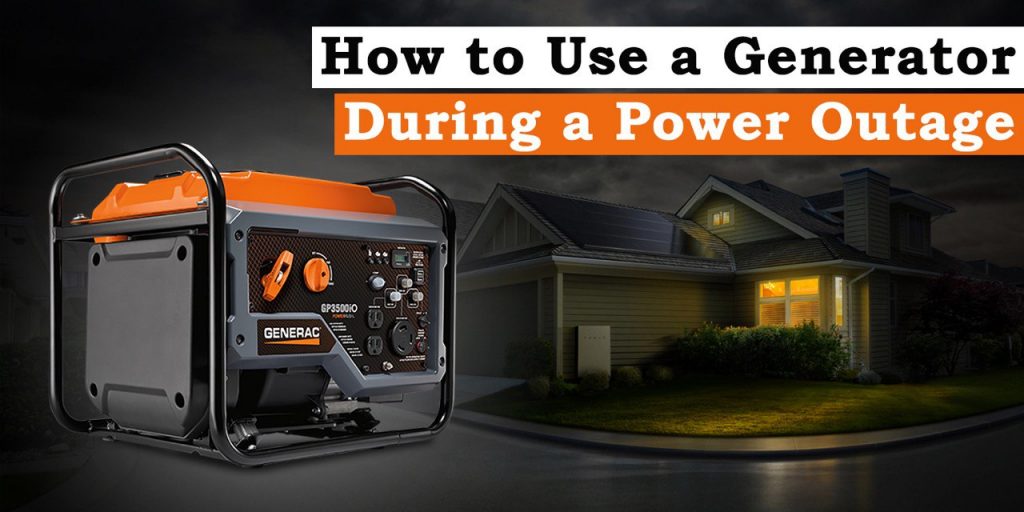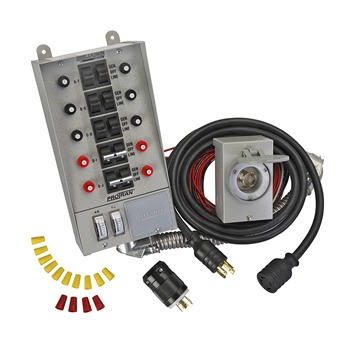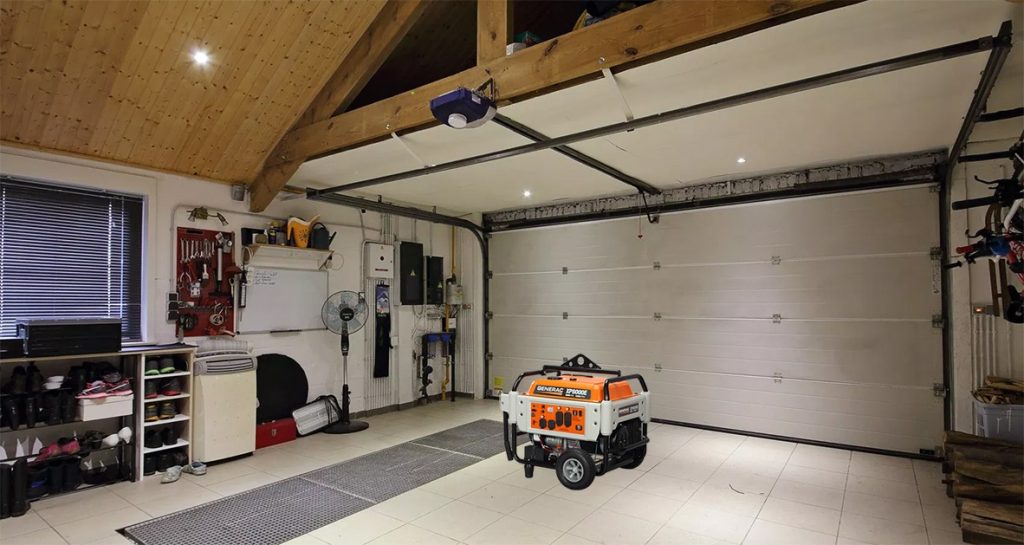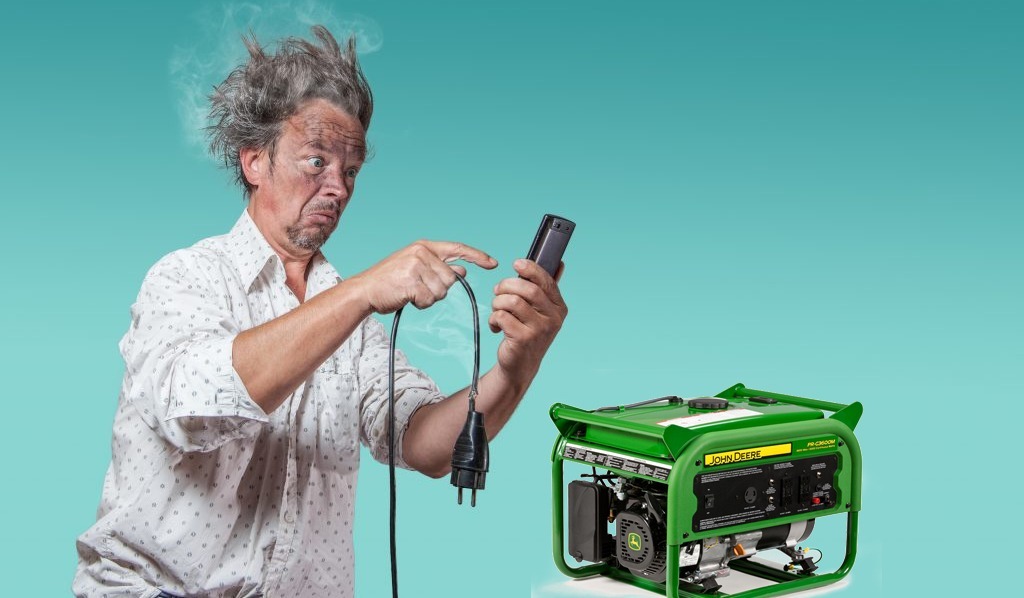General Practical Tips on Using a Portable Generator Safely
Last Updated on March 10, 2025

Have you noticed there’s always a chance someone could suffer injuries during a power outage? Moreover, there might be massive property damage. Of course, who wants this to happen?
And that’s why you need to understand precisely how to use your portable generator safely; isn’t it so?
Well, you likely know there’s a pride attached to owning a powerful portable generator. With this remarkable machine, you can power many electrical appliances and other devices hassle-free during an outage.
Here Are Some Practical Tips
But we all get the point: When operating a portable generator, one could get injured or suffer property damage if the machine is not used correctly.
Well, there’s no need to worry; you can use the following tips to protect yourself and your family against the risks of using a portable generator.
Let’s quickly find out.
Maintain Electrical Safety
Yes, maintain electrical safety whenever you use a portable generator. How can you do so? Remember this:
Think About Size Matters
First, size matters. Make sure you size your generator correctly. Ensure it meets the recommended electrical loads (depending on what you intend to power). Make sure you have a built-in capacity for such loads.
Keep this in mind: If you undersize the generator, there will be consequences-it means you’ll produce a condition similar to the “utility brownout condition.” This often occurs with insufficient voltage.
Whenever this happens, it can damage some big things-including a well pump. Of course, smaller items like computers might also be damaged.
Use a Transfer Switch
Next, use a transfer switch.
 Using a transfer switch is one of the safest ways that one can use a portable generator as a home backup. It’s always practical to use a manual transfer switch. Essentially, a transfer switch is a small, robust piece of electrical gear.
Using a transfer switch is one of the safest ways that one can use a portable generator as a home backup. It’s always practical to use a manual transfer switch. Essentially, a transfer switch is a small, robust piece of electrical gear.
You can connect your generator to the transfer switch using a Genset cord- this is a thick, heavy-duty cable that you plug into an outlet receptacle; it’s usually installed outside the house. The receptacle is officially known as the power inlet box.
From inside the house, the engineers often install a cable that runs from the outlet all the way to the transfer switch. The Genset cord works by conveying electricity from the house into the receptacle.
Next, the current passes through the interior cable- right into the transfer switch- to the circuit breakers and onto various circuits you wish to power.
Functions of the Transfer Switch
Generally, the transfer switch exists for three purposes:
- First, it isolates the circuits in your house- those you wish to power. This means other circuits are denied power- get it? That’s how it prevents overloading
- The transfer switch usually isolates the generator (electrically) from the grid. It similarly isolates the house. Such isolation generally prevents generated power from backfeeding the electricity onto the grid. Such a backfeeding can cause a fire or injure the power utility personnel sent to repair the system and restore power
- The transfer switch stops utility-supplied power from supplying the house when the generator still runs; this can cause an electrical fire. It might also cause the generator to blow up in the fire
Use a GFCI Transfer Switch on a GFCI- Enabled Generator
It’s a requirement of the NEC (National Electrical Cord) that the ground fault circuit interrupter (GFCI) must be used on dual voltage generator outlets (those producing 120-240 volts).
Note that GFCI outlet receptacle-equipped generators need a specifically designed transfer switch. Such a switch is variously referred to as “a 3-pole switch” or a GFI-compatible switch. Either way, NEC regulations require that it must be used.
Whenever this switch is thrown, the user effectively separates the circuits supplied by the generator from the twin 120-volt circuits (the utility supplies). Further, the user disconnects a third leg of the utility-supplied circuits (generally known as the neutral).
Use a 2-Pole or 3-Pole Transfer Switch
The GFCI outlets will generally trip off whenever you use a 2-pole standard transfer switch on a generator equipped with a GFCI;-this one doesn’t disconnect the neutral.
Note that using this switch violates the electrical code since you limit the generator’s capability by defeating the GFCI receptacles. Think of it; this is also ironic because you’ve spent money to have the GFCI protection!
You can, however, use a 2-pole switch or a 3-pole transfer switch of other non-GFCI generators.
Protecting Yourself From Carbon Monoxide Poisoning

You can learn how to use gasoline-powered portable generators safely. Of course, whether the machines are powered by diesel fuel or kerosene, they typically operate with an internal combustion engine.
Such engines produce exhaust waste in the same way the automotive engine does. The exhaust comes with an odorless, colorless and highly toxic gas-carbon monoxide (CO).
Thus, this warning is urgent: Never run your portable generator indoors!
Further, use these practical tips to protect yourself from carbon monoxide poisoning:
- Always leave a minimum of 3 feet of open space around the generator; this ensures the exhaust output isn’t blocked. It also ensures adequate ventilation is always maintained.
- Never use the portable generator near the windows, doors, or air intakes. This can cause the exhaust to drift into your home, other enclosed space, or the vehicle.
- Immediately you sense the effects of carbon monoxide poisoning– get away. The symptoms are characterized by a dull headache, dizziness, weakness, vomiting, nausea, confusion, shortness of breath, loss of consciousness, or blurred vision act fast!
Move out to a place with fresh air without delay; Seek medical attention!
How to Manage Fuel Quality and Safety Matters
First, never refuel a hot generator. Yes, never do so near a heater or other hot objects (like nearby a barbecue grill). Also, never keep fuel containers near a portable generator.
Always remember this: A hot generator’s muffler can melt plastic.
Maintain the Fuel Supply: In case you buy bulk fuel to last for days, slow the fuel’s chemical degradation by using a fuel stabilizer. Always remove fuel from the generator after an emergency passes. Drain the gas out of the fuel lines as well as the carburetor and run the machine dry.
This prevents generator-startup problems.
Ensuring the Portable Generator’s Weather Safety
You can buy a manufactured cover (like GenTent) to shelter your generator in bad weather. Some use their creative skills to build special shelters for the machines; this protects the generators from the ravages of rain, wind, or snow.
It’s wise to keep a 5-foot space at all times (make sure this distance separates your generator from the surrounding surfaces). Doing this can prevent fire risk, protecting the machine from overheating.
Make a Test Run to Guarantee The Generator’s Operational Safety
There’s no shortcut around it- you must perform a thorough test run to ensure the system operates properly. And the test run must be done as soon as the machine is set up. Never wait until emergency time to do the test run.
You might learn some crucial lessons by performing an early run.
Once you determine any issues, carry out the following suggested checks:
Trip the GFCI Outlets
Tripping the outlets helps indicate a ground fault in the supplied circuit or incompatibility in the 2-pole transfer switch. You can solve this by installing a 3-pole transfer switch. Otherwise-if it doesn’t work-hunt down and check the ground faulting somewhere within the electrical system.
Try Tripped Breakers (Better Power Management)
Try better power management. Think of this: You may approximate your well pump’s power draw but soon discover that the motor demands more power than you ever imagined.
Temporarily allow the pump to have complete access to the generator’s full power output. Try to determine the cause of the under-voltage because this can damage your well pump.
Keep this in mind: During the first few seconds of starting the generator, the electric motors may surge up to triple their rated current. This type of “better power management” can save the water pump’s life.
Prevent a Fire Hazard While Using Your Generator

Never doubt it: Anyone who tries to operate a generator without adhering to the set safety procedures risks causing a fire. Yes, these machines can become very hot when the engine runs; of course, they’ll remain hot after you switch them off.
With this in mind, shut down the generator and give it time to cool before refueling. As noted, never try to refuel a running or hot generator. Never store fuel near the machine or other inflammable objects (note that it’s illegal in many states to store fuel or gasoline in unapproved vessels).
Once you understand how to run your portable generator safely, you can go through a power outage without unnecessary risks.
Final Thoughts
Portable generators will continue to be valuable for many decades. Millions of people use them daily to insulate themselves from the effects of frequent outages.
Others use them to power appliances or light their surroundings while enjoying recreation or outing. Use the tips discussed here to protect yourself and your family while using this equipment to enrich the quality of life.